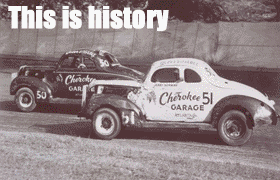
The drivers chose to run five laps in a three wide formation in a salute to Dan Wheldon following the news of his passing in an early race crash at Las Vegas on Oct. 16. The race was not restarted. Photo by LAT Photo USA/Courtesy IndyCar
IndyCar continues to move forward with its investigation into the 15-car accident on Lap 11 of the Oct. 16 race at Las Vegas Motor Speedway, in which two-time Indianapolis 500 winner Dan Wheldon sustained unsurvivable injuries.
As part of Phase 1 of the investigation, an internal team led by series safety and competition officials is evaluating data to make a factual determination of the circumstances surrounding the entire incident.
The investigation team will utilize outside, independent experts and consultants for analysis of various aspects of the data. The results of the investigation will be turned over to an independent, third-party group for validation.
“We must continue to move forward with a thorough investigation,” said Randy Bernard, CEO, IndyCar. “Fortunately, that has already begun, and we have the protocols in place to get this done. This was a tragic accident, and IndyCar needs to understand everything possible about it.”
IndyCar anticipates Phase 1 will be complete in several weeks. Phase 2 of the investigation will utilize the information learned in Phase 1 to minimize risks in the future.
Accessible data currently being utilized by the investigation team includes:
· Accident Data Recorders (ADR3s) from all 15 cars involved in the accident. The ADR3 senses and records 1,000 samples per second just prior to, during and after an accident-triggering event. The ADR3 crash-hardened system can record data from the both the vehicle’s internal sensors as well as information from the car’s on-board data acquisition system.
· Accelerometers from all 15 drivers involved in the accident. These sensors are integrated into the left and right radio earpieces worn by drivers to measure dynamic forces during an accident, including the acceleration in the X, Y and Z axes.
Oldsters are embarrassed to admit, “I am at my wits end; I need help.” Typically families are having problems long before the case reaches the crises point. One of the most touching stories I have ever heard was when a 72-year-old man finally learned to read. However, many people have accused this medicine being plain sham, but later it was found that while taking these pills is must. For more wholesale tadalafil information visit West Ridge Academy’s home or podcast.
· Analysis of all cars involved in the incident.
· Personal safety equipment including firesuits, Nomex underwear and helmets.
· Analysis of videos, including footage from in-car cameras, safety vehicles and Race Control.
· Analysis of photos, including the accident itself, as well as track conditions post-accident.
· Post-incident reports from Race Control and the Holmatro Safety Team.
· Event-specific data from Timing & Scoring.
Guidelines emphasizing improved driver safety and quality car construction were the key specifications stressed to chassis manufacturers that produced the current generation car, which was introduced in 2003. Key safety mandates include energy-absorbing materials, side intrusion panels and increased distance between front and pedal bulkheads.
IndyCar and Dallara continue to work on developing its next generation chassis, which will debut in competition in 2012; a universal road/oval chassis with an enhanced driver safety cell and design, which reduces the risks of wheel-to-wheel contact and interlocking wheel.




















